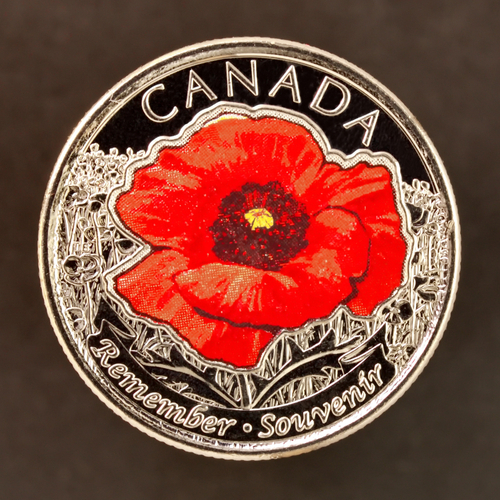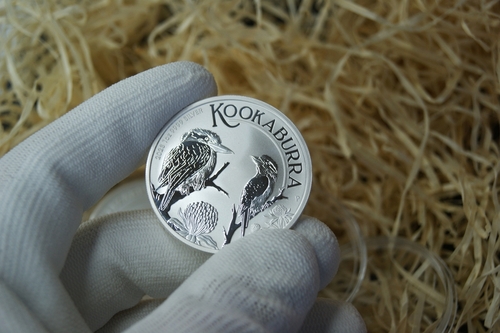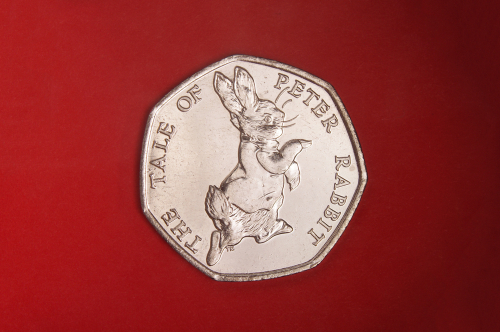At Remitly, we don’t just love helping you with your finances—we also love the history behind currency. Our guide on colorful currency got us thinking more about coins, specifically the colorful ones. Coin collecting dates back to ancient Rome. There’s history in every round piece of metal, and it becomes even more intriguing when you add some color.
Exploring countries with the most colorful coins has shown us how coins can be true works of art. From legal tender to commemorative collective pieces, colorful currency tells stories and represents culture.
Our latest guide explores five countries and their colorful coins, what makes them so special, how they’re made, and why people collect them. Even if you’re not a collector, learning about these stories can give you insight into countries and their culture.
What makes coins colorful?
There are several techniques to make coins stand out with distinctive colors. The first artisans to give coins a pop of color were those who hand-painted with enamel. As technology advanced, colorized coins found their way into circulation, not just display cases.
Techniques for coloring coins:
- Appliqués: The simplest and least expensive way to color coins; an appliqué is placed on top of the coin’s surface.
- Pad printing: Also known as tampo printing, this process uses a silicone pad and transfers a 2D image onto a 3D object (coin).
- Digital ink printing/photo quality printing: allows photographic-style images or color scenes to be printed on a coin’s surface.
- Selective plating/selective color fill: This technique uses plates to ensure that only certain parts of the coin are filled with color; the rest remains silver or gold.
Why modern technology matters when coloring coins
Once a fragile process, color application technology has become far more durable, creating finishes that better resist wear. Now, techniques used by the Royal Canadian Mint and the US Mint can produce brightly colored coins that will last decades.
For coin collectors, the newer technology used by national mints allows for easier assessments of authenticity and valuations of coins. Though national mints produce tens of billions of coins each year, only a small percentage are officially colorized and certified.
The Numismatic Guaranty Company (NGC) has a grading scale to help identify coins that have been altered or have flaws, helping collectors to accurately determine the value of each coin.
Countries creating colorful coins
United States: the late bloomer taking on color

The US Mint has traditionally favored classic, metal-only designs. Take the American Women Quarters Program—though the coins remain uncolored, they’re crisp and clear, demonstrating what new technology can achieve.
While the US might have been late to the game, it certainly knew how to make a colorful entrance. In 2020, the US Mint produced its first colorized coin in homage and as part of the Basketball Hall of Fame National Coin Program. The limited edition coin shows a vivid and bright orange basketball, an American pastime, rich with history.
Although the US Mint does not produce many colorized coins, the Patriotic Mint works to enhance many commemorative coins produced by the US Mint. While these coins may hold less value, they certainly make a statement. Coins produced outside the US Mint are great for collectors who simply love the artistry of the coin.
How the US is becoming a key player:
- Technological investment
- Cultural resonance
- Collector demand
Fun fact: Did you know that the first US coin did not say “In God We Trust,” but “Mind Your Business?”
Canada: a pioneer of color

Canada has long been at the forefront of colorful coin design. Bold colored coins with intricate wilderness designs aren’t only for collectors, either; the Royal Canadian Mint released the colorized poppy coin into circulation in 2004.
By embracing full-color designs and selective coloring early on, particularly focusing on wildlife, Canada has produced series like “On the Trails of Wildlife.” The series showcases a fully colorized moose on a 1-oz silver coin. The coin is not only beautiful but also legal tender. The “Wild Reflections” series, released in 2024, demonstrates how the selective application of color can bring vivid and lively scenes to life on coins that were once only silver.
What’s special about the Canadian approach to colorized coins:
- Strong thematic focus
- High-quality minting
- Legal tender status
- Collector demand and community support
Fun fact: Canada’s one- and two-dollar coins were affectionately nicknamed the loonie (one) and the toonie (two).
Australia: creative storytelling through colorful coins

Sticking with boldly colorful wildlife themes, Australia is among the top countries producing colorful coins. Along with wildlife, the Royal Australian Mint (RAM) has released colored coins that reflect Indigenous heritage, children’s literature, and national celebrations.
This year, RAM introduced a one-dollar buck coin of Bluey for Christmas. The vibrant blues and oranges showcase the technology and innovation behind Australia’s color coins.
The Perth Mint (the second national mint in Australia) has been producing colorized coins since the mid-80s, creating legal tender for Australia, Tuvalu, and the Cook Islands. A pioneer, the mint creates beautifully crafted colored coins using LED UV printers to create layers of colors on perfectly engraved coins.
How Australia makes colored coins special:
- Cultural storytelling
- Circulation of colored coins as legal tender
- Diverse themes
Fun fact: Australia officially stopped using the one and two-cent coins in 1992.
New Zealand: creativity in bold colors
New Zealand might be smaller than Australia and Canada, but it certainly makes a big splash regarding colorful coin design. In 2015, the Reserve Bank of New Zealand circulated a colored design to commemorate the Australian and New Zealand Army Corps (ANZAC). This 100-year commemorative coin was also New Zealand’s first colorized coin.
In 2021, the Bank of New Zealand released the Whānau Mārama—Family of Light series. Whānau Mārama in the Māori language is a term that means family of celestial bodies. The coins etched with beautiful images and colors came in a set of two, with the reverse side showing the portrait of Queen Elizabeth II. Designs like Whānau Mārama are rooted in Māori stories and carry deep cultural meaning.
Why New Zealand’s colorful coins matter:
- Cultural integration of Māori motifs
- Limited collector pieces
- Distinct designs and aesthetic
Fun fact: Before 2017, the New Zealand $1 coin and the UK £1 coin were so similar in size and appearance that you could easily mistake one for the other and accidentally use the New Zealand coin in the UK or vice versa.
United Kingdom: tradition meets colorful innovation

The Royal Mint has increasingly embraced color in its commemorative coin lines in the UK. Though the UK’s circulating coins remain largely traditional, more and more collector’s editions are exploring bold, bright colors.
The first colorful coin in the UK was the 1997 two-pound coin—and it wasn’t even all that colorful, simply silver and gold melded together. Since then, modern technology, including stamping and specialized printing techniques, has allowed the Royal Mint to produce coins with far more vivid and intricate color scenes, especially for non-tender collector’s editions.
Popular themes of royal events, Beatrix Potter characters, Harry Potter, and national anniversaries have been big hits all around.
Fun fact: In the UK, you cannot pay fines in pennies, even if they’re colorful!
Notable mentions: countries making vibrant coin designs
The list above isn’t exhaustive, but a highlight, as many countries and territories also produce strikingly colorful currency. Palau and Malawi are a couple of notable countries creating some truly beautiful and vibrant coins.
Palau, for example, has been creating colorful coins since 1992, and its 1998 commemorative coin with a colorized sea turtle is truly a work of art. Malawi has used color appliques on silver-plated coins showcasing endangered frogs from around the world, a unique way to bring attention to an important cause.
Just imagine looking down into your hand and finding what should have been a plain silver coin, but instead, a bright, colorful frog is ready to leap off the metal.
Fun fact: Palau uses US currency, as do the Marshall Islands and Micronesia.
Why collectors love colorful coins
Coins with color can be worth as much as or more than regular coins. The added color elevates the art, and the scarcity adds value, as mints tend only to make a small percentage of colorized coins that aren’t in circulation.
Recognizing which colored coins and from which countries are the most valuable requires skill. Many collectors in the community are active on forums like the NGC and Coin Community, exchanging helpful information to identify rare finds. Few moments are more rewarding for collectors than finding that final coin to complete a set.
Aesthetic appeal and artistry
Colorful coins are visually striking. They’re miniature works of art capturing landscapes, wildlife, and culture in full color. The visual charm of colorful coins from different countries creates a strong appeal for collectors.
Limited editions and investment potential
Coins with color are often issued with limited quantities. The Bluey Christmas Coin 2025 from Australia will only produce 10,000. That may sound like a lot, but it’s still quite limited. When scarcity meets demand, the prices and values of these coins significantly increase.
If there’s a particular buzz over certain colored coins in circulation or produced for commemorative purposes, it also drives up value and cost. Many coins depict cultural and historical moments that are limited editions—as a coin collector, who wouldn’t want one for the collection?
Cultural and historical significance
Color isn’t just aesthetic—it often tells stories. It represents national identity, environmental awareness, heritage, wildlife conservation, and Indigenous culture. Color adds depth to already intricate designs, and this, along with the coin’s value, drives collectors to seek out certain colorized coins.
The Australian colored coin celebrating the Torres Strait Islander Flag, for example, uses color to represent the ocean (blue), land (green), and the Islander people (black). The design was influenced not only by the colors of the land and its people, but also by the island’s history of using traditional netting for its fishing practices.
How to start your own coin collection
If you’re new to the coin-collecting scene and looking to start your first collection, there are some things to keep in mind. Official mint websites are a great resource and ensure authenticity.
Numismatic coins aren’t your regular spare change. They have historical significance and often bear mint markings that add value for coin collectors. Mint markings usually show where the coin was produced, proving its authenticity. For colorful coins, researching and seeking out authorized distributors and coin dealers ensures there are no fakes in your valuable collections.
Tips for new collectors
- Store coins in cool environments. Humidity isn’t your friend, along with strong light or surfaces that scratch.
- Protective casing, display cases, or coin books help preserve coins and their colors.
- Handle with clean or gloved hands, as oils or residue can wear away color over time.
- Set a budget so you don’t break the bank.
Colorful coins connect us
Change at the bottom of your purse may just be a piece of round metal, but colorful coins are far more priceless. Even colorized coins that are legal tender hold a special place and significance when it comes to coin currency.
Colorful coins represent artistry, technology, culture, history, and storytelling. Many countries, like Canada and Australia, are leading the way with coins being both commemorative and legal tender, making beautiful currency special and accessible to the public. A symbol of pride and history, colorful coins tell stories that connect us all around the world.
Want to learn more about world currency? Check out our World Currencies section on the blog.
FAQs
What countries have colorful coin currency?
Canada and Australia are two countries that not only have colorful commemorative coins for collection, but also in circulation. Other countries with colorful coins include the US, New Zealand, Malawi, and the UK.
Are colorful coins more valuable than non-colored coins?
Colorful coins can be more valuable than non-colored coins, depending on the number of coins created, the historical or cultural significance, and whether the color was added during or after minting.
Are colored coins only for collecting, or are they legal tender?
Certain countries, like Canada, have issued colorful coins as legal tender, such as the 2004 poppy coin.